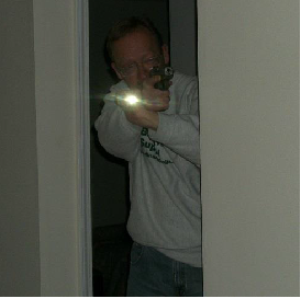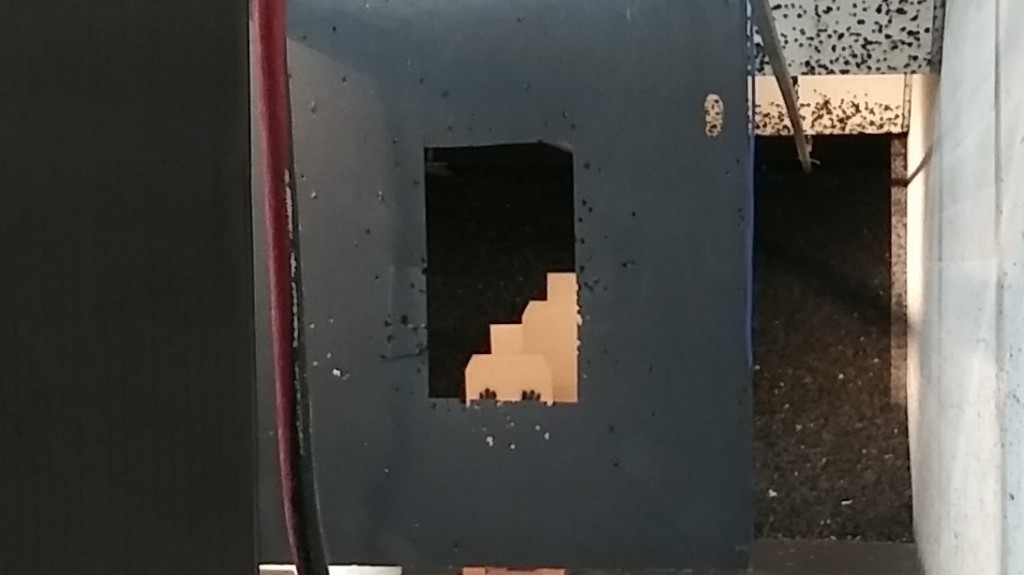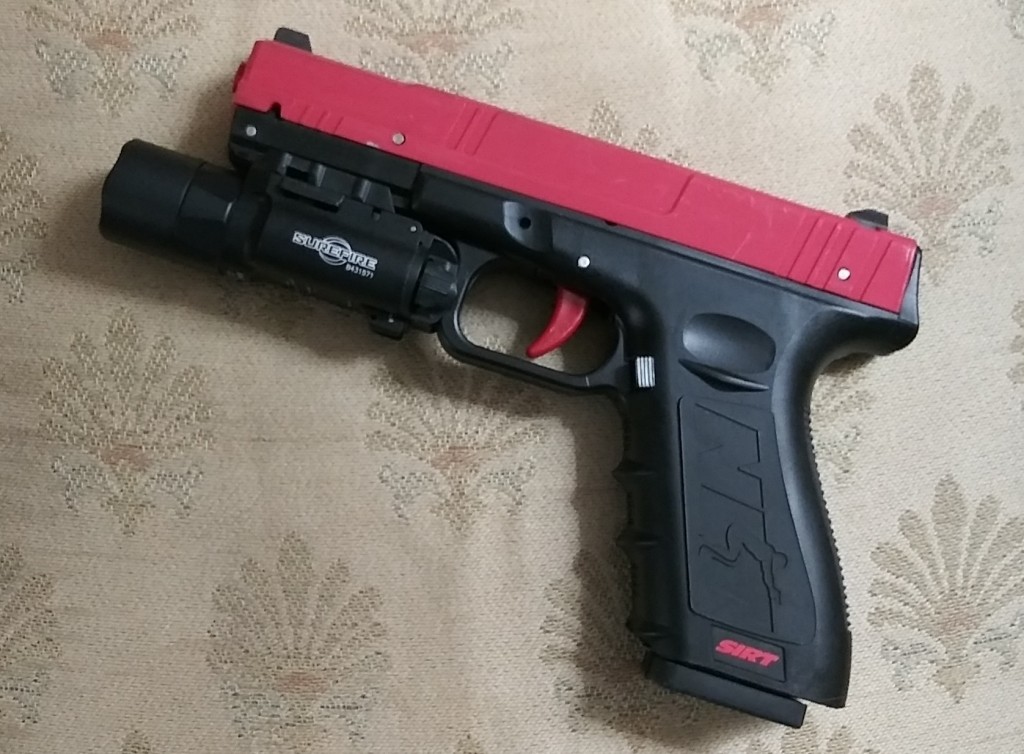Home Defense Pistol Skills
My latest Shooting Illustrated article is up.
“In the process of defending one’s home with a pistol, several additional skills beyond marksmanship are useful and necessary. In particular, the ability to move through the home while holding a handgun and techniques to inform the all-important DON’T SHOOT/SHOOT decision are critical.”
https://www.shootingillustrated.com/content/home-defense-pistol-skills
Flashlight skills at home are important enough that the flashlight chapter of Indoor Range Practice Sessions is a free download on my ebook store.
https://store.payloadz.com/go/?id=2505573

Recognition Primed Decision-making (part IV)
RPD in the context of Personal Protection has two components. The first is Recognizing what is happening. The second is making a Decision about what to do about it. That Decision is the result of overlaying our ‘Options’ on ‘People’ and ‘Situations’ to achieve an appropriate response. Our response represents the Confront and Resist components of the Avoid, Escape, Confront, Resist model. The best decisions are made in advance and then implemented in the moment of need.
Part I of the series Recognition Primed Decision-making (part I) discussed the types of people we might encounter.
- Benign person
- Angry person
- Predator or angry person with personal weapons (fists, shod feet, etc.)
- Angry person or predator with a contact weapon
- Predator or angry person with a projectile weapon(s)
Examples of situations were also discussed.
- Area of limited visibility such as a parking deck
- Walking alone in unfamiliar territory
- Being in the presence of a person who makes us uncomfortable
- Having an unknown person approach us
- Being home in a state of Unawareness or Unfocused on personal protection
- Etc.
Part II Recognition Primed Decision-making (part II) listed our Reactions or Options to an attempted predation.
- Freeze
- Submit (at least temporarily)
- Negotiate
- Posture
- Flight
- Fight
- Unarmed
- Non-Lethal
- Lethal
Our Confront and Resist Options are based on our personal situation and value choices. These can change over time or rapidly, even second to second. A person may not be initially comfortable with carrying potentially lethal tools but be perfectly comfortable with unarmed combat or non-lethal tools. As time goes on, they may become more comfortable with a wider range of Options or they may not.
Changes in available tools varies with the situation. For instance, a person may not choose to carry a firearm in their place of employment but instead to lock it in their vehicle while working. During the walk from the business place to the vehicle, they might only be equipped with pepper spray and a flashlight. Immediately upon entering and locking the vehicle, the person may don a handgun and impact tool. During the walk, the person may choose a previously developed response tactic that only involves using the tools on their person. While this may not be the optimal solution, it is the one available at the time. Upon upgrading their Defense Condition https://en.wikipedia.org/wiki/DEFCON with a handgun, the chosen tactic may be different.
It’s useful to view the context of Boyd’s Process as an iterative and interactive model between two parties rather than the single party static model usually described. In a predation, the predator will make the first move, the intended victim will respond with a Reaction or Option, and then the predator will choose or react from his/her range of Options.
A predator also has a group of Options/Reactions when the intended victim begins to Confront or Resist rather than being caught up in the Victim Mix. Part V will explore what these are and how they affect our Decisions.
Tactical Professor books (all PDF)
- Thinking Clearly about Self-defense and Personal Protection https://www.payloadz.com/go?id=3377208
- Real Shootouts of the LAPD https://realshootoutsofthelapd.com/
- Serious Mistakes Gunowners Make http://seriousgunownermistakes.com
- Indoor Range Practice Sessions http://indoorrangepracticesessions.com
- Concealed Carry Skills and Drills http://concealedcarryskillsanddrills.com
- Advanced Pistol Practice http://bit.ly/advancedpistolpractice
- Shooting Your Black Rifle http://shootingyourblackrifle.com
- Package deal of Thinking Clearly about Self-defense and Personal Protection, Serious Mistakes, Indoor Sessions, Concealed Carry, and Shooting Your Black Rifle (50% off) https://store.payloadz.com/details/2644448-ebooks-sports-shooting-drills-package.html
Low Light Indoor Match
#flashlightfriday
I had the opportunity to attend a low light shooting match at a local indoor range yesterday evening. My goal for the evening was to observe closely so I didn’t shoot it. The format consisted of clearing three rooms and a hallway constructed of plastic sheets. It was done three times with targets moved around each time. The shooters had a look at the layout lighted the first time but subsequent stages were not.

Non-threat targets (Don’t Shoots) were designated with hands painted on them.

These non-threat targets were interspersed among the threat targets.

Some of the shooters had weapon mounted lights but many did not.


A few observations:
- Some attendees, although regular shooters, had never shot while using a flashlight.
- Most of the shooters had some familiarity with flashlight technique but mostly on a theoretical basis.
- The cadence of shooting, in terms of splits, transitions, and moving from position to position, really slows down when using a flashlight in low light.
- The difference in light intensity when going from almost no light,

to illuminating with a high intensity light

can be momentarily disconcerting, even to the person holding the light.
Matches like these represent the practical application of theoretical techniques. They are a valuable exercise for everyone who participates.
Tactical Professor books (all PDF)
- Thinking Clearly about Self-defense and Personal Protection https://www.payloadz.com/go?id=3377208
- Real Shootouts of the LAPD https://realshootoutsofthelapd.com/
- Serious Mistakes Gunowners Make http://seriousgunownermistakes.com
- Indoor Range Practice Sessions http://indoorrangepracticesessions.com
- Concealed Carry Skills and Drills http://concealedcarryskillsanddrills.com
- Advanced Pistol Practice http://bit.ly/advancedpistolpractice
- Shooting Your Black Rifle http://shootingyourblackrifle.com
- Package deal of Thinking Clearly about Self-defense and Personal Protection, Serious Mistakes, Indoor Sessions, Concealed Carry, and Shooting Your Black Rifle (50% off) https://store.payloadz.com/details/2644448-ebooks-sports-shooting-drills-package.html
SureFire® SideKick® Initial Review
#flashlightfriday
The first of SureFire https://www.surefire.com/ flashlights from the Try-Out Haul to be evaluated was the SideKick® https://www.surefire.com/products/illumination/flashlights/sidekick-a/ It arrived in a battery depleted state but was quickly recharged via the supplied USB cable.
It has proven to be useful and yet relatively unobtrusive on my keychain.
The carabiner attachment has been handy for removing and reattaching the light to the keychain. When setting the light down as an impromptu worklight, the flat shape is much better than a round light, even one with a limited roll aspect.
The switch has two options, which are an improvement over some of the complicated switching patterns often found on tactical lights. Pressing the switch and leaving it puts the light in the High mode. If the switch is pressed a few seconds later the light turns off. The variability of output is controlled by quickly pressing the switch multiple times. Mine cycles from High (300 lumens) to Medium (60 lumens) to Low (5 lumens) and then Off in order. The literature says this is the opposite order of the factory order setting but that’s how it came. The order can be reprogrammed during the recharging process.
Comparing the SideKick to the 6P LED showed some noticeable differences. SureFire’s website says:
MaxVision Beam® floods your boundaries with light; triple output: 300, 60 and 5 lumens
The throw pattern is clearly different than the 6P LED. The 6P has very bright center spot with a less intense spill surrounding it. The SideKick throws a much wider pattern that is much more even throughout.
The Target ID test for it was on a prototype Recognition Primed Decision training target at 10 feet. This showed that both High and Medium modes would provide more than adequate illumination to make the Don’t Shoot/Shoot decision. The Low mode’s usability for this would depend on the user’s eyesight but that’s probably irrelevant for this usage.
One thing the SideKick doesn’t do as well as the 6P is function as a shooting assist light. Because of its size and switch location, none of the commonly taught flashlight shooting techniques will work with it. That’s not the SideKick’s intended role but if it were pressed into service for that purpose, the user would have to be very careful not to get the hand holding the flashlight in front of the gun muzzle.
When I have the opportunity, I’ll have someone shine the SideKick in my face to see if it’s as blinding as the 6P is. That’s another good testing criterion for a flashlight.
As a reminder, the flashlight shooting chapter of my book Indoor Range Practice Sessions is free to download. If you own a pistol for personal protection, you should know how to use a flashlight along with it. Your flashlight should be as close or closer to your bed as your pistol is.
Flashlight Chapter of Indoor Range Practice Sessions https://store.payloadz.com/details/2505573-ebooks-law-indoor-range-session-11-flashlight.html Free
Indoor Range Practice Sessions https://store.payloadz.com/details/2501143-ebooks-education-indoor-range-practice-sessions.html Not Free
FTC Notice: The SureFire products were sent to me gratis but I receive no compensation for writing about them.
Shiny! – Surefire Try-Out Haul
A friend at Surefire https://www.surefire.com/ sent me a large box of swag as a present. A number of flashlights were in the package, as well as some batteries and CDs.
As much as I advocate using flashlights to avoid Negative Outcomes, I should talk more about the particulars of those tools. So, for several weeks I’ll be writing a series of #flashlightfriday posts. It will be a ‘Try-Out Haul’ as the YouTube models say.
The Surefire 6P LED has been my bedside light for years. It’s a tried and true product and well regarded in the industry. A Streamlight Microstream I received from HK-USA https://hk-usa.com/ has been on my keychain for a couple of years now. It’s been useful and convenient to carry.
I’m going to try out the new gear from Surefire to see what I think of it as an upgrade for my current setup. On Friday, I’ll be reviewing the Sidekick, which will take the place of the Microstream on my keychain.
Also included in the package was an invitation to attend the Inaugural Surgical Speed Shooting Summit. The event will be held in Tennessee in June of 2022. It’s still in the planning stages but as more information becomes available, I will post it.
FTC Notice: These products were sent to me gratis but I receive no compensation for writing about them.














You must be logged in to post a comment.